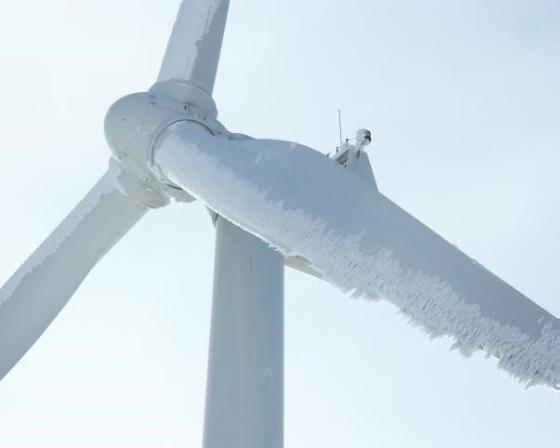Large Wind Turbine Operations in Icing Conditions

Cold regions have good wind resources, but icing affects the wind turbine performance and power production. Such losses have been reported to lead up to a 17% decrease in Annual Energy Production (AEP) and 20-50% in aerodynamic performance/power coefficient. Worldwide, installed wind energy capacity in ice prone regions in 2015 was 86.5 GW, which is expected to reach 123 GW in year 2020. This highlights the importance of better understanding of atmospheric ice accretion and finding innovative technological solutions for wind turbine operations in icing conditions to reduce the Capital Expenditure (CAPEX) and the Operational Expenditure (OPEX). The International Energy Agency (IEA) Task 19: ‘Wind energy in cold climates’ has also urged the development of new methods to enable better prediction of the effects of ice accretion on wind energy production. Icing on wind turbine blades effect its aerodynamic and structural integrity, which consequently effects the annual energy production. Therefore, there is a growing need to improve the current knowledge about aerodynamic design and performance of large wind turbine rotor blade for optimal and cost effective operations in icing conditions. The icing conditions within cold climates are insufficiently included in the design limits presently covered by the national and international standards for wind turbine design.
This project focused on better understanding of atmospheric ice accretion on large wind turbine blades at different operating and geometric conditions. The aim is to optimize the wind turbine blade aerodynamics to minimize the effects of atmospheric ice accretion on wind turbine performance and overall energy production. Multiphase computational fluid dynamics based numerical tools will be used for this research work, in addition to the experimentation. The main outcomes of this project will be:
- Improved understanding of atmospheric ice accretion physics along wind turbine blades.
- Estimation of wind energy production in ice prone cold climate regions.
- Implementation of ISO 12494 for wind turbine applications.
- Improved understanding of large wind turbine aerodynamics under icing conditions.
Project Duration: 2018- 2021
Project Funded By: UiT- The Arctic University of Norway
Budget: 320,000 EUR